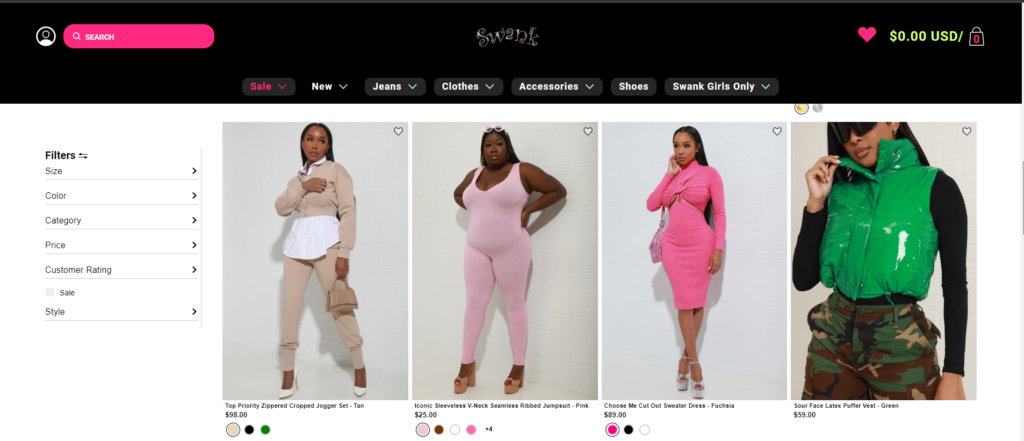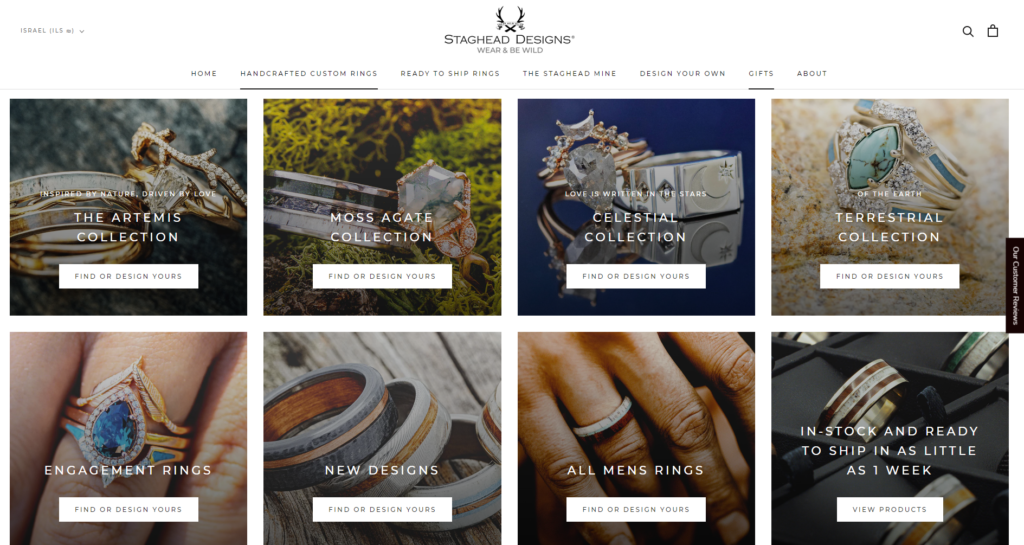Merchandising is the art of displaying and arranging products in a way that promotes sales. Since the first thing we see when we enter any eCommerce store is with our eyes, the visual arrangement of products is important. Visual merchandising ensures that the way products and collections are displayed online are appealing, enticing and encourage engagement.
Figuring out how to achieve this effectively can take some trial and error, so A/B testing is encouraged. Trying out some variations to see which one produces the most desired outcome is a great idea. But to start you off, here are some visual merchandising do’s & don’ts that we recommend.
Visual Merchandising DO’S
Have a GOAL
When deciding how to visually merchandise, you need to be clear on what your goal is. What are you trying to achieve through how your products look? If your main goal is to sell as many products as possible, place the best sellers high up. If your goal is to get rid of a certain stock, place that at the top. Your business objective will affect the merchandising rules you choose. These will also affect how your visual merchandising display appears.
Consider the SEASON
The seasons affect your merchandising strategy greatly. Every season and holiday, shoppers are expecting to see certain items on display. This is what they are interested in buying. Make sure people can easily find what they are looking for, relevant to the time of year. Make sure all displays, photos and promotions are coordinated with the season at hand.
Follow the TRENDS
When there is a trending product or concept that relates to your store, make sure your display reflects it. For example, if you run a fashion store and the color ‘red’ is trending- put your red items in a prominent position. This helps your shoppers know that you are up to date with what is happening, and are considering their expectations and experience.
High quality PHOTOS
If people are purchasing from your eCommerce store, the photos they see of the products are what can entice them. These photos should be high quality, attractive and appealing. If they are not, people will not feel inclined to purchase from you. Eye-catching photos that clearly display the product are vital.

Keep it CLEAR
The text that accompanies the images should also be clear. Don’t have too much text, and make sure the font is appealing to look at. Make sure that the products are evenly spaced out between one another. Having clarity will reduce the possibility of people making returns, as they know what to expect when ordering.
Encourage the FUNNEL
It should be intuitive and seamless to follow the product image or text, to the product page, to the checkout page. Make sure this funnel is easy to use. This will encourage sales, and reduce the chance of cart-abandonment. If there is friction along the way, people may abandon their sale.
Be CREATIVE
There is so much room for creativity in visual merchandising. Visual discovery connects your images to social media platforms, creating a natural inspiration journey. Hyper tagging also allows shoppers to hover over images they like to find the products they like. Moving images or videos are also an option. There are many ways to creatively visually merchandise to create more sales.
Stay BRANDED
Your visual merchandising should reflect everything about your brand. This creates loyal customers, helping them to understand you as a business. The font, color scheme, layout, tone and feel of the website should all reflect you. Make sure that as soon as someone enters your site, they know who you are, and feel connected to that.
Visual Merchandising DON’Ts
Create OVERCROWDING
When it comes to the eyes; less is more. You don’t want your store to be visually overstimulated, as this will cause shoppers to look away. If the screen is too busy, shoppers may also feel choice fatigue. Make sure your shoppers can clearly see each product, and feel unstressed about making their choice.
Have no COORDINATION
Having a mismatched page will not give the shoppers a clear idea of who you are. Make sure that you have chosen an overall color theme that matches your brand and encourages the sales you want. This isn’t to say that it should be boring or repetitive. But it should follow some kind of theme, and should be pleasant to the eye, rather than overwhelming.
Be too WORDY
Keep the words you use clear and simple. The more concise and to the point, the better the effect. People want to understand your brand, and what you stand for. They also want to know what the product is they are purchasing. This should be able to fit into a few sentences, a small paragraph at most. Too many words will cause shoppers to get bored, and look away.

Stay the SAME
Your visual display merchandising should change regularly. It should be updated with new photos, updated text and any other improvements you can think of. Just like in a brick-and-mortar store, you want to keep things fresh and exciting. If the display stays stagnant, you will not encourage shoppers to regularly visit your store. They want to find something new.
Allow EMPTY SPACE
Make sure that all of your website seems full, and abundant. You don’t want shoppers to see empty space, as this might give the impression that you are lacking products. Make sure things are spaced out evenly, and in a way that seems full and profitable.
Conclusion
Your visual merchandising should tell a story. It should let shoppers know who you are, reflecting your brand and business ideals. It should also encourage sales, and help shoppers along their journey. These do’s and don’ts should help you on your way.
